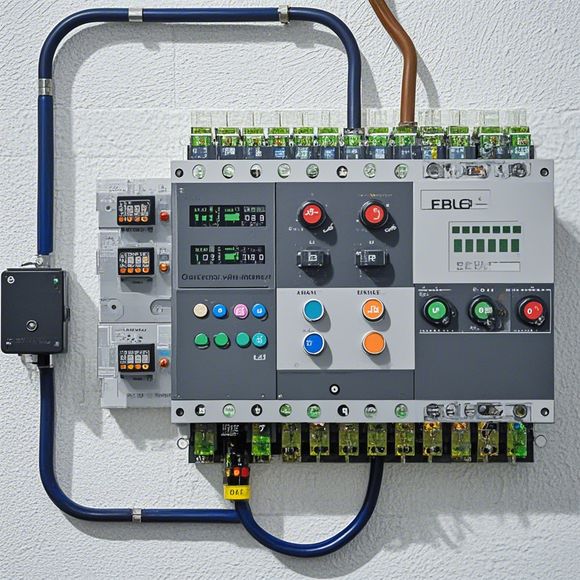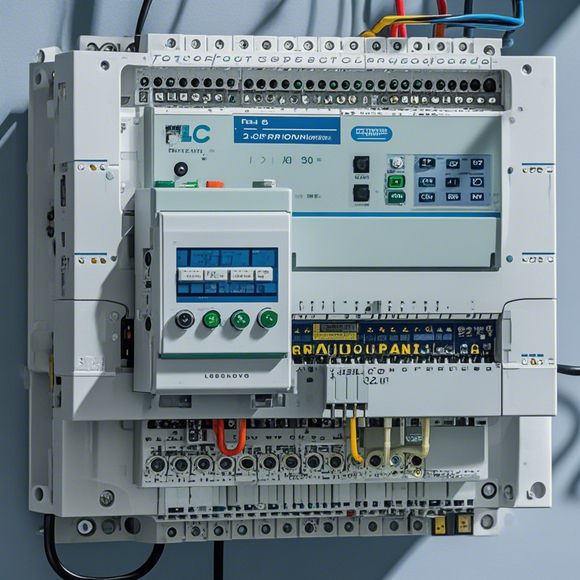PLC Controller Introduction and Practical Applications
In this brief summary, we'll introduce the concept of Programmable Logic Controllers (PLCs) and discuss their practical applications in various industries.Programmable Logic Controllers are digital control systems designed to handle complex industrial processes. They are capable of performing functions like monitoring, controlling, and adjusting processes based on inputs from sensors and actuators. These controllers can be programmed to perform a wide range of tasks, making them highly adaptable to different industrial environments.One of the most common applications of PLCs is in manufacturing processes. In these applications, they are used to automate assembly lines, monitor production quality, and optimize production efficiency. For example, PLCs can be programmed to automatically adjust machine speeds based on the output of sensors or to switch between different production modes depending on changing conditions.Another important application of PLCs is in process control systems. In these cases, PLCs are used to control heating, ventilation, and air conditioning (HVAC) systems. By monitoring temperature and humidity levels in different areas of a building, PLCs can automatically adjust HVAC settings to maintain optimal indoor conditions.In conclusion, Programmable Logic Controllers play a crucial role in industrial automation. They offer a powerful tool for improving efficiency, reducing downtime, and ensuring product quality. Whether it's in manufacturing or HVAC systems, PLCs are becoming increasingly essential in today's ever-evolving technological landscape.
As a foreign trade operator, understanding the basic concepts and practical applications of PLC (Programmable Logic Controller) controllers is crucial for your operations. A PLC is a device that can be programmed to perform specific tasks by using a variety of programming languages such as ladder diagrams, function blocks, and structured text. In this section, we will provide an overview of how to use PLC controllers, their advantages, and common applications in various fields such as manufacturing, automation, and control systems.
1、Understanding PLC Controllers
What is a PLC controller? A PLC controller is a programmable device that controls industrial processes, machinery, or devices based on instructions stored in its memory.
Advantages of PLCs - They are highly reliable, efficient, and cost-effective due to their ability to reduce errors and maintain high productivity. Additionally, they offer flexibility in terms of programming and configuration, which allows for customization according to specific needs.

2、Types of PLCs
Input/Output PLC: These are used for controlling physical devices like lights, fans, etc. They have input ports for sensors and output ports for actuators.
Process Control PLC: Used in industries where precise control over chemical reactions and processes are needed, like in pharmaceuticals, food processing, and chemical manufacturing.
Fieldbus Communication PLC: This type of PLC uses fieldbus communication protocols to connect with other PLCs or devices in the same network. This makes it easy to manage complex systems with multiple nodes.
3、Programming Languages
Ladder Diagrams: A visual representation of the logic that drives a system, often used in older PLC systems.
Structured Text: An easier way to write code for PLCs that requires less time to learn compared to ladder diagrams.
Function Blocks: A more advanced approach that allows you to create complex sequences of actions without having to write out each step individually.
Structured Text with Function Blocks: This combines the benefits of function blocks and structured text programming, making it easier to write and maintain code.

4、Common Applications of PLC Controllers
Manufacturing: PLCs are widely used in manufacturing settings to control machines, monitor process conditions, and automate production lines.
Automation: In industries like agriculture and forestry, PLCs are used to control irrigation systems, fertilizer dispensers, and harvesters.
Control Systems: In power systems and HVAC systems, PLCs are used to control heating, ventilation, and air conditioning (HVAC) systems, ensuring consistent temperature and humidity levels throughout the building.
Healthcare: PLCs are used in hospitals to automate processes like patient monitoring, medication dispensing, and laboratory analysis.
5、Conclusion
- PLCs are versatile tools that can help you streamline processes, reduce downtime, and increase efficiency in both industrial and domestic applications. By understanding their basic concepts and practical applications, you can make informed decisions when selecting and implementing PLC solutions. Remember, investing in the right PLC controller can save you money in the long run by reducing errors, increasing productivity, and extending the lifespan of your equipment.
Content expansion reading:
Articles related to the knowledge points of this article:
PLC (Programmable Logic Controller) Control System Basics
Plumbers Rule! The Role of PLC Controllers in the World of Waterworks
PLC Controllers: A Comprehensive Guide to Understanding Their Prices
Effective Strategies for Handling PLC Control System Faults
PLC Controller Advantages: A Comprehensive Guide for Success in Global Trade
Mastering the Art of PLC Control: Unlocking Industry-Grade Automation Powerhouses